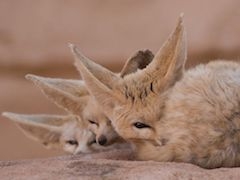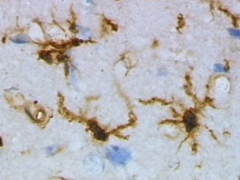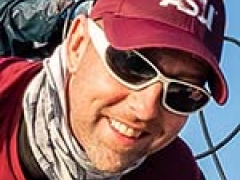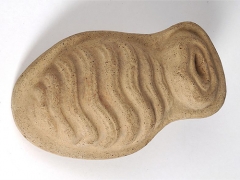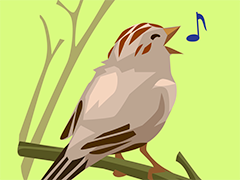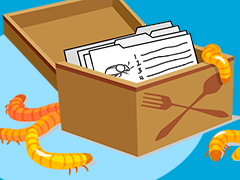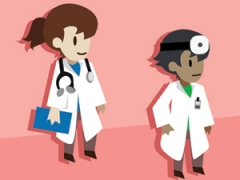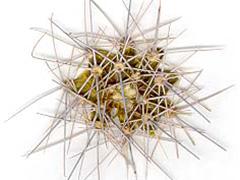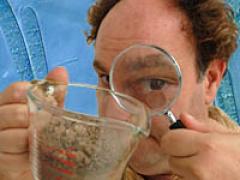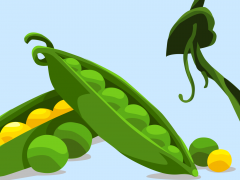Did you ever wonder why you see the colors you do or if other animals see the same colors that you see? We see light that bounces off of things around us. When the light enters our eyes, special cells tell our brains about the light.
Also in: Français
- Home
- Activities
-
Stories
- World of Biology
- Meet Our Biologists
- Listen and Watch
- PLOSable Biology
-
Embryo Tales
- All About Autism
- Xs and Ys: How Our Sex Is Decided
- When Blood Types Shouldn’t Mix: Rh and Pregnancy
- What Is the Menstrual Cycle?
- Understanding Intersex
- Twin Tales
- The Mysterious Case of the Missing Periods
- Summarizing Sex Traits
- Shedding Light on Endometriosis
- Periods: What Should You Expect?
- Menstruation Matters
- Investigating In Vitro Fertilization
- Introducing the IUD
- How Fast Do Embryos Grow?
- Helpful Sex Hormones
- Getting to Know the Germ Layers
- Gender versus Biological Sex: What’s the Difference?
- Gender Identities and Expression
- Focusing on Female Infertility
- Fetal Alcohol Syndrome and Pregnancy
- Ectopic Pregnancy: An Unexpected Path
- Creating Chimeras
- Confronting Human Chimerism
- Cells, Frozen in Time
- EvMed Edits
- Stories in Other Languages
- Images
- Links
- Contact
- About
Biology Stories
Explore the world of biology and meet some of our biologists. Here you can learn about the living world and find out what is so cool about biology that someone would do it for a living. Pick a story to read or listen to one of our podcast shows filled with guest scientists who share their experiences and passion for discovery.
Living things need to be able to sense the world around them to avoid danger, find food, find mates, and for other important activities. Learn about the five senses used by many animals to sense the environment.Also in: Français
Recently, scientists have tried to break into the secret world of microglia (the brain’s immune cells). They are trying to figure out how these cells can shape-shift into weird and wonderful formations.
There is something about sharks that bring out our inner fears that sends chills down our back. But these animals have an important role in the health of our oceans. There are over 500 species of sharks, which means there is a lot to be learned about them. Like, did you know some sharks do not have any teeth. Dr. Biology catches up with James Sulikowski, a biologist and shark expert. The two talk about what we know and don’t know about these amazing animals.
A lot of illnesses, like colds, have very visible symptoms, but other conditions are not so obvious. Learn about how people spot and treat a condition called endometriosis.
Many animals, including humans, build homes to live in. But when you have a home, you often need to work hard to defend it. In this article scientists discovered a peaceful defense mechanism that giant honeybees use to fend off predators and protect their homes.
In Yellowstone National Park, winters are getting shorter and there is less food for scavengers. That’s bad news for scavengers like bears, but could wolves help?
Many science teachers tell jokes in the classroom, but should they? Scientists found that overall, students like it when their science teachers tell jokes, but girls and boys react differently to certain types of jokes.
Food fit for a king or maybe a local pot-luck dinner. These six-legged recipes will be sure to have everyone talking. In some cases, you might end up the buzz of the meal.
Dead men tell no tales, but their bones can. It just takes a particular kind of scientist to read the clues that tell the story. Dr. Biology sits down with guest Tony Falsetti, a forensic anthropologist who knows his way around a skeleton. They talk about the role of forensic anthropology and some of the mysteries of history Tony has helped to solve.
Dr. Biology gets the skinny on our largest organ - our skin. Professor and author Nina Jablonski talks about the important ways our skin works for us each day.
No, that is not a typo in the episode title. My guests today are collaborating on the study of animal movement, including humans. Both researchers use tools to document and analyze movement in animals. One tool is a symbolic language that has been in use since 1928 and the other is a new software tool called SLEAP that uses A.I. to capture animal and plant movements. In this show, Dr. Biology gets the inside story about these tools from guests Valarie Williams and Talmo Pereira. This episode is part of a series of podcasts recorded at the Society of Integrative and Comparative Biology conference– also called SICB.
Could more sleep make fewer bullies? Scientists have learned that there may be a link between sleep, technology, and bullying behavior.
When a virus infects our cells, it can do a lot of damage. But, in some cases, certain viruses get into a cell and go dormant, kind of like they are taking a nap. If we are going to better fight viruses, we need to know what viruses do when they are dormant.
Battling bacteria can be tough, as they can evolve quickly and resist many of our treatments. But Shelley Haydel is working on new ways to fight bad bacteria.
Tucked away inside steel-gray cabinets in the Life Sciences Building is a different kind of library known as the ASU herbarium. The stacks upon stacks of color-coded folders contain more than 210,000 plant specimens -- a kind of botanical history of Arizona and the world.
If it weren't for plants, most of the other organisms on this planet wouldn't survive. Most plants can use energy from the sun to make their own food. Let's take a closer look at the complex process of photosynthesis that gives them this special ability.Also in: Nederlands | Français | Español | Português | Türk | عربى | தமிழ்
What could possibly be the difference between a cup of dirt and a cup of soil? Dr. Biology talks with microbiologist Ferran Garcia-Pichel about why he avoids the dirty word and prefers to say soil. Could it be there is more in a cup of dirt - excuse me a cup of soil than meets the eye?
The life and work of Gregor Mendel has some surprising pieces. Known as the father of genetics, his work was mostly unnoticed for 30 years after he published his famous paper. It is also possible this famous scientist suffered from test anxiety.
Also in: Türk








